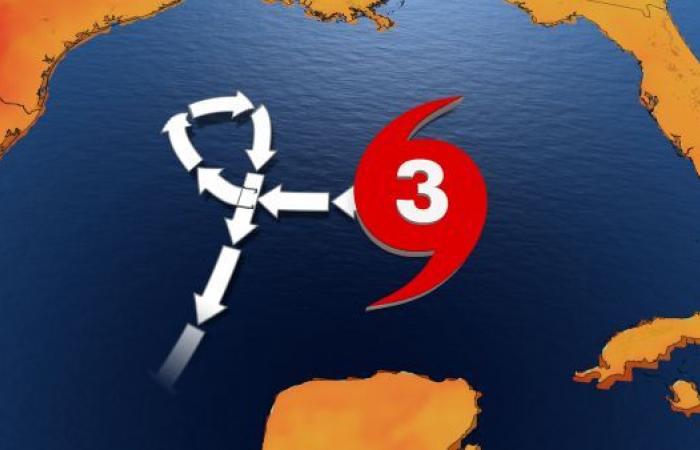Published on November 8, 2024 at 4:48 p.m.
After lashing Cuba, Hurricane Rafael was expected to lose intensity before turning westward. But that’s not really what happened.
A boost of energy
The story must have been quite classic. A tropical storm gains strength, hits a Caribbean island, then loses intensity in the Gulf of Mexico. The waters of the Gulf are less warm in this sector, almost in the center of the Gulf. The wind shear would also weaken it. But Rafael seems to want to improvise rather than follow the script.
Unheard of since 1985
Rather than losing intensity, Rafael regained his strength between Thursday and Friday. The storm once again became a category 3 hurricane, with winds approaching 200 km/h. A major hurricane is already rare this time of year in the Gulf of Mexico. Rafael isn’t just late, he’s exceptional in other ways. The atmospheric pressure in Rafael’s core dropped to 956 hPa. This is the lowest pressure in the Gulf of Mexico in November since Kate reached 953 hPa in 1985.

Full of surprises
The hurricane seems to have other surprises up its sleeve. We are trying to closely follow its trajectory, in order to prepare the population for heavy rains. But Rafael refuses to cooperate. The hurricane is somehow stuck between two crests. A first, above Florida, whose winds from Rafael’s side blow towards the north and could take it in that direction. However, this scenario is not the one we favor at the moment. Another ridge is over Mexico, and winds from Rafael’s side blow south.

An acrobatic trajectory
The scenario of a turn towards the south initially seemed the most likely. But Rafael’s intensification mixed the cards. There are several models that have the function of predicting the path of hurricanes. There is often consensus between these predictions. In Rafael’s case, it is rather polarization, even confusion, that reigns. Some send it to Florida, some to Texas, and some to Mexico. We even see trajectory scenarios looping and making a complete U-turn. For the moment, no serious threat to the population is anticipated, neither in Mexico nor in the United States, regardless of the trajectory. The preferred scenario sends Rafael south, while causing it to lose intensity, to the point where it would dissipate before even reaching land in Mexico.

With the collaboration of Kevin Cloutier, meteorologist.
SEE ALSO: You’ll be amazed to see which state received the biggest first broadside of the season
World






